Newton's Law Of Motion MCQ Level - 1 - Physics MCQ
10 Questions MCQ Test Topic wise Tests for IIT JAM Physics - Newton's Law Of Motion MCQ Level - 1
A bob is hanging over a pulley inside a car through a string. The second end of the string is in the hand of a person standing in the car. The car is moving with constant acceleration a directed horizontally as shown in figure. Other end of the string is pulled with constant acceleration a vertically downward. The tension in the string is equal to :
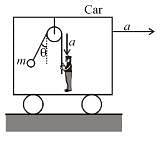

A man is standing on a spring balance platform. Reading of balance is 60 kg wt. If the man jumps outside the platform, then the reading of the balance :
| 1 Crore+ students have signed up on EduRev. Have you? Download the App |
The elevator shown in figure is descending, with an acceleration of 2m/s2. The mass of block A is 0.5 kg. The force exerted by block A on block B is (mass of block B is 1 kg)
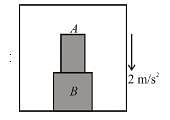

In the figure shown, a person wants to raise a block lying on the ground to a height h. In both the cases if time required is same then in which case he has to exert more force. Assume pulleys and strings light.(let F1 be force in (i) and F2 be force in (ii))
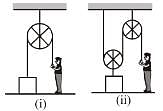
A spring of negligible mass going over a clamped pulley of mass m supports a block of mass M as shown in the figure. The force on the pulley by the clamp at the time of equilibrium is given by

A uniform rope of length L and mass M is placed on a smooth fixed wedge as shown. Both ends of rope are at same horizontal level. The rope is initially released from rest, then the magnitude of initial acceleration of rope is
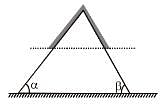
Two blocks A and B of masses m and 2m respectively are held at rest such that the spring is in natural length. Find out the accelerations of blocks A and B respectively just after release (pulley, string and the spring are massless).
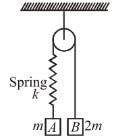
Two particles of mass m each are tied at the ends of a light string of length 2a. The whole system is kept on a frictionless horizontal surface with the string held light so that each mass is at a distance a from the centre P (as shown in the figure). Now, the mid point of the string is pulled vertically upwards with a small but constant force F. As a result, the particles move towards each other on the surface. The magnitude of acceleration, when the separation between them becomes 2x, is :
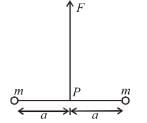
A person is standing in an elevator. The situation in which he finds his weight less than actual is?
Block of mass M1 and M2 are connected by a cord which passes over the pulleys P1 and P2 as shown in the figure. If there is no friction, the acceleration of the block of mass M2 will be :



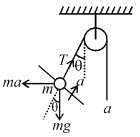




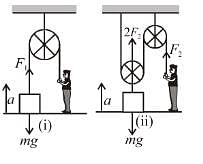


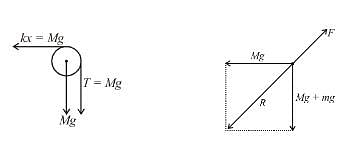




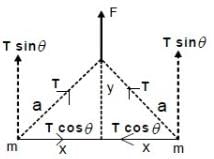



 we have the option C as the correct one.
we have the option C as the correct one.

















